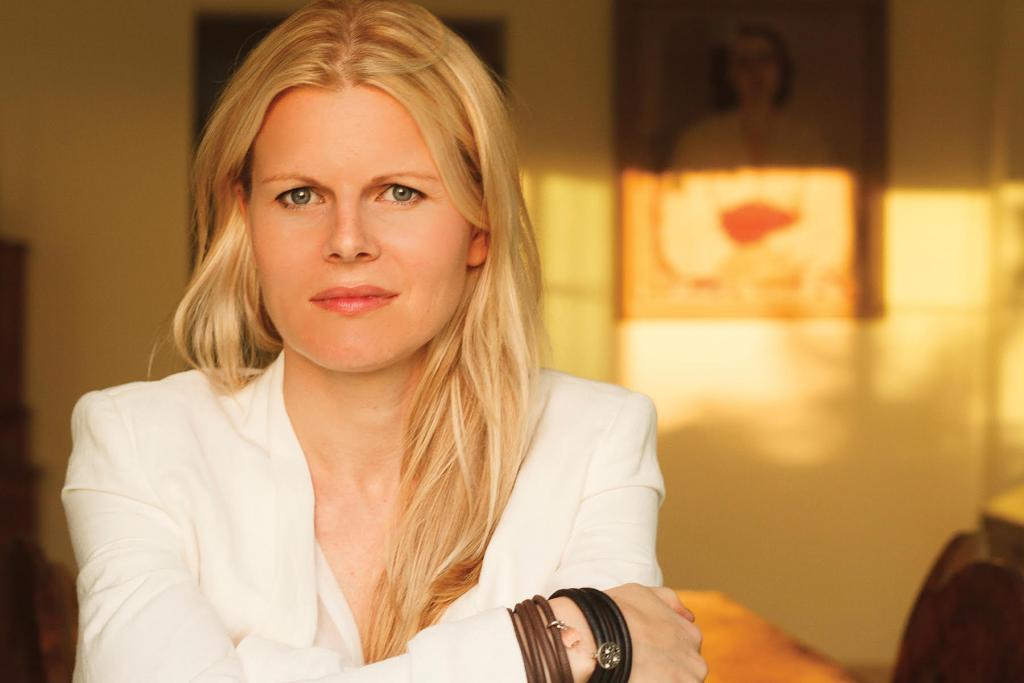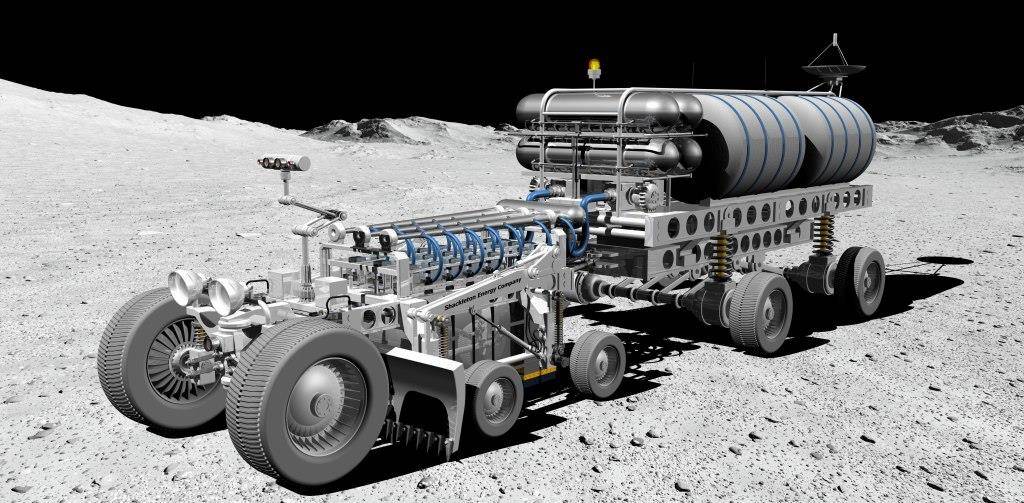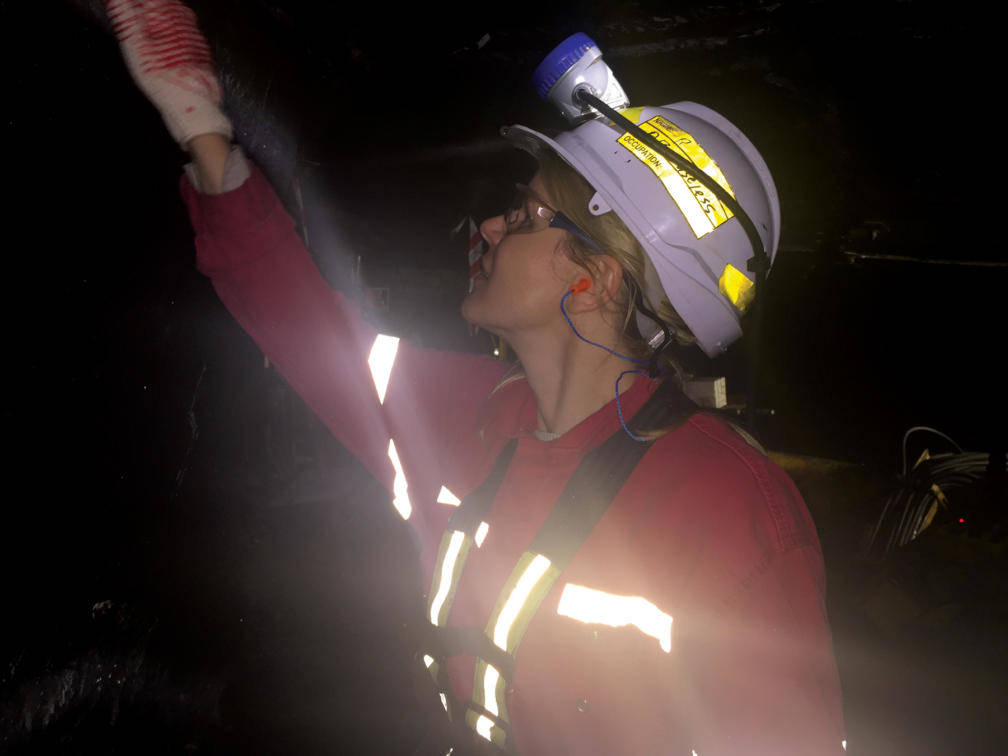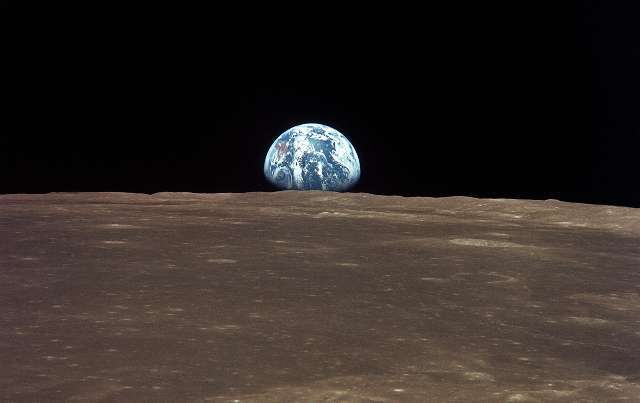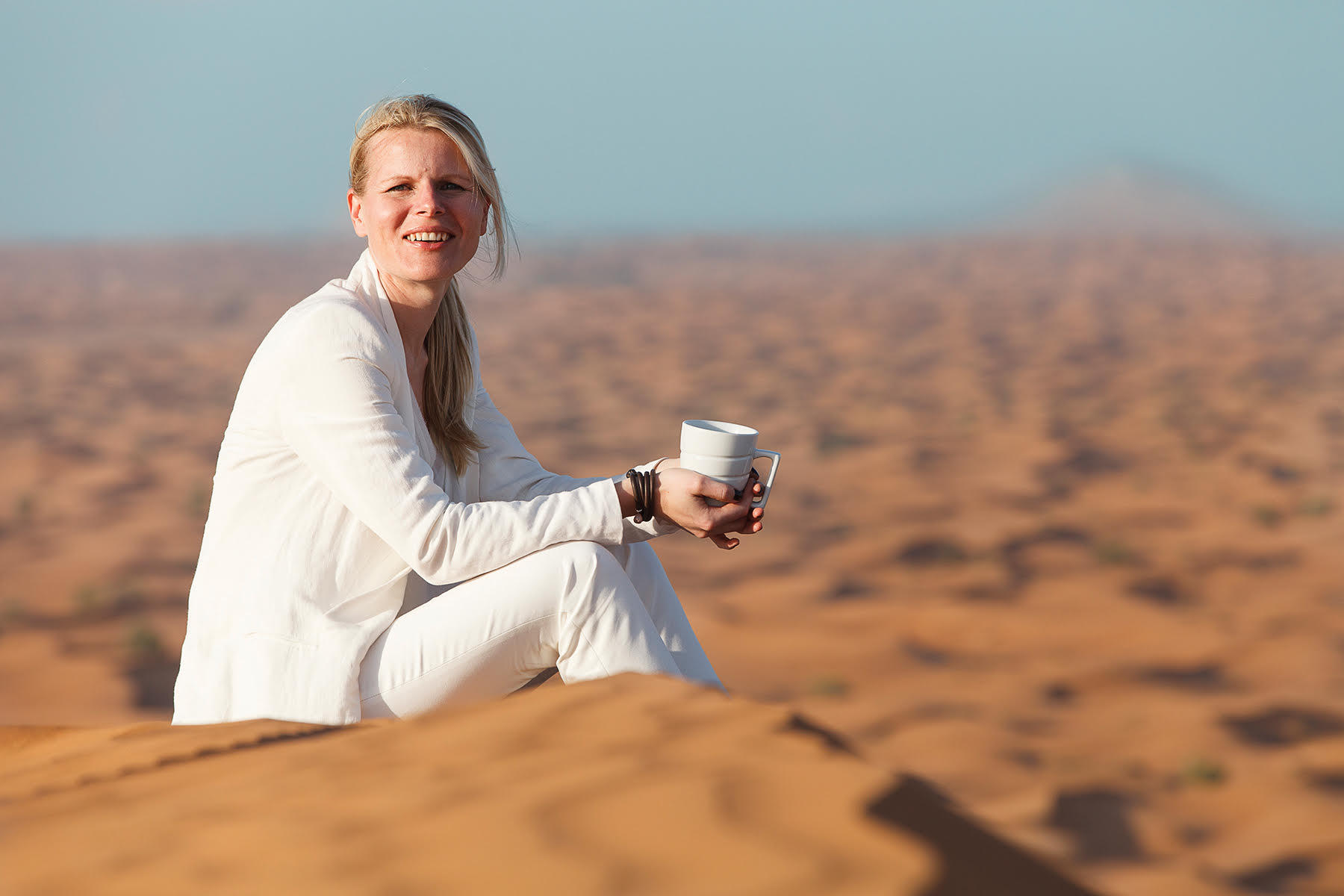Erika Ilves is an entrepreneur who does not let herself be limited by the size of planet Earth while there is a whole universe out there. “For now, it’s easier and cheaper to try things on Earth than fly it out to space and bring it back,” she claims. “But in the future, we will need the resources on the moon as well as the asteroids to enlarge ‘our economic area’.”
“WALL-E”, a 2008 animation by Disney-Pixar, takes us to planet Earth in 2805, abandoned by people and covered in heaps of trash. There is only one cute robot left whose job is to clean up the planet. In real life, we do not have to wait another 800 years to see a robot like this – they already exist. And if we treat our resources more reasonably, the picture might not turn out be as gloomy as depicted in the movie.
“Personally, I do not believe we will be running out of resources any time soon. We have plenty of resources on Earth to last us a few centuries,” says Erika Ilves, a cofounder of OffWorld, a company that is developing a new robotic workforce to enable the settlement of the solar system. But Ilves would not want to be among the first humans to set foot on Mars. Before moving people to other planets, it might be wiser to send robots out there.
“Right now on Earth, we need about 10 tons of metals, biomass and fossil fuels per person per year. Even with our resource needs expected to double by 2050, we have plenty of elements, including seabed mineral and even fresh water deposits. We don’t always have the technology to access these resources economically, but I have no doubt the technology can be developed. Energy is a challenge. Going outside planetary boundaries is a challenge. But again, all of these are addressable. The only justifiable attitude here is that of rolling up your sleeves and solving very real problems that we face,” Ilves, who herself has done exactly that, says.
Think big!
The space industry currently amounts to €323 billion a year. In 2015, around one fourth of it was still government expenditure, but thanks to Elon Musk’s SpaceX and the likes, private companies are rapidly taking over. At present, the biggest chunk of it goes to communication satellites and the infrastructure on Earth that supports it, but that could likely be overshadowed by other opportunities like space resources, manufacturing and tourism.
“Being able to use lunar and asteroidal resources means we can dramatically lower the cost of in-space transport and make Earth orbit and even the moon more accessible to everyone, even high school projects,” Ilves claims. “Think of an Estonian school team being able to send their experiment to the moon. It also means it will be cheaper to build and supply structures in orbit and on the moon – think private orbital stations you can visit, micro-gravity labs you could work in, outposts on the moon you can visit. And perhaps, during our lifetime, we could have thousands of people living on Mars.”
OffWorld was founded in November 2015, but not much has been heard about the company. The same team of seven cofounders had been previously working on another space infrastructure project called the Shackleton Energy Company, announcing in 2007 that they would be building the equipment and technologies necessary for mining the moon and placing a team there within eight years. But they failed to do so. “This was an $18 billion infrastructure program, so a mission impossible in terms of raising the funds,” Ilves explains now. “And yet, we managed to put together a global consortium of top tier space contractors, secured interest from multiple governments and secured our sovereign partner in Dubai. So we did come shockingly close to pulling the thing off.” Yet, this time they want to be sure to show results first.
Before aiming at the moon, they are developing mining robots for a terrestrial mining client because “it is the best place to develop and mature our mining system”. It also happens to be a large market that can support investment into the development of such a system.
Just like in WALL-E, the robots look like boxes on wheels (or tracks or legs, if necessary) and have robotic arms with different tools for different tasks. They can be built up of 10x10x10cm modules. Currently they are still in the prototyping-phase and operate in a simulated mine environment but will hopefully be ready to hit real mines in two years.
These small robots could evoke a big leap forward in the industry that currently employs about 20 million people around the world, in both open pit and underground mining, using technology that is at least a century old. “The current technological paradigm in mining on Earth relies on heavy machinery, human labour, drill and blast bulk mining. We can’t export this way of mining to the Moon.”
Unlocking one challenge after another
Having been to underground platinum mines, Erika describes them as the toughest places for humans to work on Earth. “These mines are dark, low, hot and smell of ammonium. I spent only a few hours there, but I was already struggling to breathe. The workers, however, spend 12 hours down there and I could not believe that we still send people to work in these conditions in 2017. Half a million people get sick every year working in the mining sector.”
So OffWorld has a solution to let the robots do the hard work for people and have people working in command and control centres on the surface instead. If a conventional small diamond mine employs 500 people today, it would only need 50 in the future, plus around 3,000 robots. In other words, that would mean that 90 percent of the current workforce would be laid off.
“But that is only half of the story − the other half is that there are thousands of ore bodies around the globe that cannot be mined today because there is no economically viable way to do so. Our swarm mining robots would make mining these ore bodies economically viable and open up a whole new inventory of mineral deposits. That would mean new human jobs where there would otherwise be none. I can’t tell exactly what the net effect on employment in the mining sector would be − we have not run the numbers on this yet. We won’t be displacing 90 per cent of the workers in the mines that we start. In many new mines, we would be creating new jobs.”
The mining robots weigh only 50-100 kilograms (110-220 lbs), so hundreds of them could be sent to the moon. “For starters, launch capacity of our rockets is the first bottleneck. Non-existent human labour is another. So we have to rely on small, modular, highly redundant robots with a high level of autonomy.” With different subsystems inside each same-size block with a standard interface, the robots would be able to assemble themselves.
It’s unlikely that once the robots are on the moon and asteroids – and have assembled factories – that there would be a necessity to send the “production” back to Earth. “The only things that we will be sending to Earth are communications signals and maybe beaming down solar power,” Ilves explains. “If we find products that can only be manufactured in micro-gravity environment, we would bring those down. Other than that, I currently don’t know of any commodities that we could get from space that we would not be able to get cheaper on Earth. Helium 3 extracted from lunar regolith is often touted as one such commodity for use in fusion reactors, but we need to first build commercially viable fusion reactors before we can seriously have that conversation.”
The main question here is obviously funding. “When it comes to development of space infrastructure projects, the markets themselves, not just technology, need to be created. To deal with this, our master plan is to first develop our universal robotics platform for the mining sector on Earth, then use that platform and money to jumpstart operations on the moon. In other words, we will underwrite moon activities ourselves, without relying on external investors. That’s why serving the mining sector on Earth is critical for our off world plans. And it puts us in control of our destiny.”
A lot is changing in the space industry every year. Even one to two years ago, remote sensing and satellite constellations were the big rage, with lots on interest in commercial space startups. This year we are already seeing the first signs of consolidation in that space. Only in the first quarter of 2017, there have been four acquisitions in this field. So it is a big deal that OffWorld has a five-year development agreement with their mining client. They work in cycles of three months to unlock the next challenge. In May, they will be presenting their masterplan and vision to a small audience in Canada but in June they will be “coming out of the closet” at NewSpace, the big startup conference of their sector.
And last, but not least, OffWorld has also hired its first Estonian employee in Tartu, who is in charge of machine learning.
Not a rocket scientist
Erika Ilves’s story seems do defy the myth that in order to have prospects in the space industry, one should be at least a “rocket scientist” by training. “Rockets are just a transport segment,” she laughs. “They are important but we need a wide spectrum of skills and sectors to enable space settlement. Two of my cofounders are literally rocket scientists, but one of them is now working on developing small factor mining technologies, the other is looking at integration of off-the-shelf innovative technologies into our system. So they aren’t even working on rocket engines. Five of my cofounders are aerospace system engineers, the other two are lawyers by education. What we all have in common is a strong drive to pick up new domains fast. In the last 12 months, we have all had to learn terrestrial geology, rock mechanics, machine learning and robotics. As Nietzsche once said, ‘he who has a why to live for can bear any how’.”
Ilves herself is one of the two lawyers in her company. She studied law at the University of Tartu because back in 1995, when she graduated from high school, there were only two “reasonable” options for further studies: law or economics. “I chose law because economics was too easy. I had always loved maths and physics, so law was a completely new experience.”
But she only practiced as a lawyer for less than a year because it was not quite a fit for her. She had just earned a Fulbright scholarship to do her PhD in law at New York University but decided not to pursue her career in this field and joined a consultancy firm instead. She spent six years at McKinsey, was based in Australia, Singapore, Africa, and learned a lot. She then joined the executive team of a Norwegian public company producing videoconference equipment, but that ended up being bought by Cisco. Her next stop was Dubai in a strategy firm solving big scale problems like how to replace income from oil on the Arabian Peninsula with other sources.
“At the time, we had a boutique strategy consulting firm, called Executive Office,” Ilves tells the story. “We always argued for removing the distinction between corporate strategy and corporate responsibility, and building companies and nations that from the outset contributed positively to the arc of human history as an integral part of what they were about. This always led to conversations about the most important global challenges facing humanity. Most of our clients at the time asserted that the most important issue was climate change. My cofounder and I got curious how people knew this was the most important issue. Had they looked at all other global issues? We were determined to answer those questions for ourselves (and thereby make sure that we personally were spending our own lives on issues that actually mattered), we started doing research in our spare time. That effort evolved into a book and an app, and a Kickstarter project and collaboration with 150 volunteers.”
Australia, Estonia or the lunar South Pole
So the space is no longer an abstract idea, but rather a collection of actual locations like the Far East or Australia. “We don’t use the word ‘space’ anymore as we are looking into specific areas like the low Earth orbit, the South Pole of the moon, or Mount Sharp on Mars − these are all different places,” Ilves says. Also, apparently people working in the field, while referring to going to other planetary surfaces to stay, no longer use the paternalistic term “colonise” but “settle” instead.
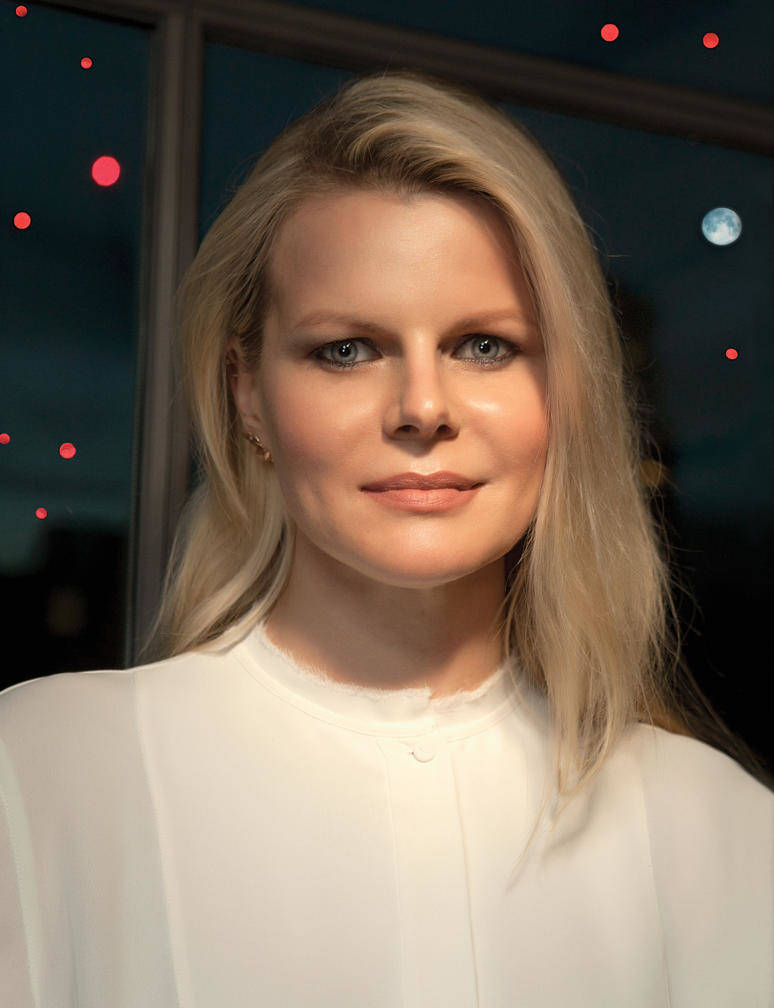 For now, Ilves herself has settled in London with her family (and to those who always keep asking, she assures them that she is not related to Toomas Hendrik Ilves, the former Estonian president). OffWorld has offices in Pasadena, CA; and in Vienna, Austria – obviously she still has to travel a lot, but she does not really mind. She will still make time to come to Estonia at least once a year. Last year she attended the Latitude 59 conference and was blown away by the bustling local startup scene.
For now, Ilves herself has settled in London with her family (and to those who always keep asking, she assures them that she is not related to Toomas Hendrik Ilves, the former Estonian president). OffWorld has offices in Pasadena, CA; and in Vienna, Austria – obviously she still has to travel a lot, but she does not really mind. She will still make time to come to Estonia at least once a year. Last year she attended the Latitude 59 conference and was blown away by the bustling local startup scene.
“The fact that we have survived as a nation in that small dark corner of the world is a miracle,” Ilves recently told in the “Globaalsed Eestlased” (“Global Estonians”) podcast. “It’s not only about the future of Estonians, but all the people of the world. It’s all about the perseverance. We will need a truckload of that to be able to settle space!”
As she always introduces Estonia as a “small and fearless” country to those who have never heard of it, she also encourages Estonian companies to benefit from the “space race”. “There is no reason why Estonian companies could not be part of the commercial space ecosystem, pushing the final frontier. There are plenty of opportunities but first, you need to be able to imagine things that are not there today, and second, find a way to pay the bills while you are developing a new technology or application.”
I
Cover: Erika Ilves (image by Imke Pinz-Cochran. Images by Imke Pinz-Cochran, Woland, Wikimedia.) The print version of this article was first published in Life in Estonia magazine.

